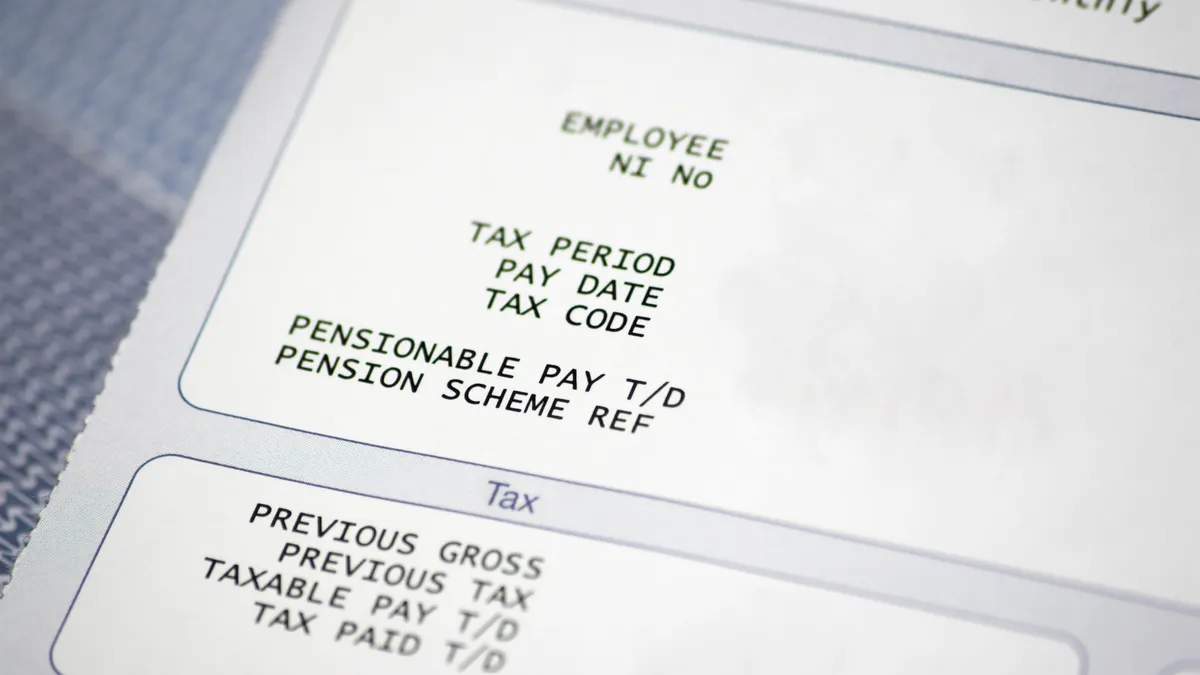Editor’s note: Emilie Shumway is an editor for HR Dive. This column is part of her series that explores how our personal lives intersect with the workplace. She can be reached at [email protected].
I found out I was pregnant a little over a year ago. While my husband and I anticipated and welcomed the news, I didn’t realize how strange and isolating the early weeks would be. My pregnancy turned out to be complicated, requiring three doctor’s visits a week by the spring — and yet I still count the first trimester as the most difficult part of my pregnancy.
The first trimester, which lasts through week 13 of pregnancy, tends to be invisible to employers. This is partly the result of cultural norms: Most wait until at least week 12 to tell not only the workplace, but even close friends and family, in case of a pregnancy loss. But this cutoff is somewhat arbitrary, hewing more to the trimester structure than actual risk. While the chance of miscarrying is indeed less than 2% by week 12, it’s already down to 5% by week 8. (Things can also, sadly, go terribly wrong well after week 12.)
Miscarriage fears aside, many pregnant people fear the assumptions — or even illegal actions — such an announcement may invite at work. As Ask a Manager’s Alison Green wrote in The Cut, “It’s illegal for your employer to factor your pregnancy into considerations of raises and promotions, but that doesn’t mean it doesn’t happen, even unconsciously.”
So, for one reason or another, workers often choose silence early in pregnancy.
By six weeks in, I was overcome with nausea all day, every day. Imagine working through a heinous stomach flu. In secret. For two months straight.
“Typically the worst part [of pregnancy] is the first trimester when it comes to symptoms,” Lilly Schott, a registered nurse and health coach for Ovia Health, told me. In her capacity at Ovia, Schott regularly takes calls from people in their first trimester who need advice, support and information. Because pregnant people rarely get a prenatal appointment before 10 weeks, they often suffer the height of their symptoms in relative isolation.
In addition to nausea and vomiting, pregnant workers often experience debilitating fatigue and brain fog, as well as other gastrointestinal issues, Schott said. There also can be mood swings and a range of emotional responses to contend with.
No matter how you slice it, the first trimester can be a certain kind of hell — but employers can come through in ways that ease the process and help workers focus on what’s most important.
1. Make sure employees know what resources are available.
Just because the medical system keeps pregnant people at arm’s length for most of the first trimester, that doesn’t mean they don’t need support. Employers often invest in benefits that workers may not even know are available. Some fertility benefits providers offer counseling for workers throughout their pregnancies.
This is where benefits communication becomes crucial. Workers who are newly pregnant or planning for a baby — a major financial and physical undertaking — are likely to be keenly attuned to how their benefits can ease the process during open enrollment. (But employers should remind workers of their benefits year-round.)
2. Emphasize the option of discretion.
Just as pregnant workers might want to tell a few close friends without informing their whole social media feed, they also may benefit from sharing with one or two trusted colleagues — perhaps a supervisor — while knowing their news won’t get out to the whole staff until they’re ready.
In the full throes of nausea, buoyed by the 5% statistic, I told my supervisor at 8 weeks. This allowed me one point of contact at work who would understand why I might be dragging or need a few minutes to lay down. It also provided me someone to vent to every so often — someone who’d been through the experience herself — making me feel less isolated. I told the whole team early in my second trimester, but it helped to have someone who knew ahead of time.
Workplaces can foster employee trust and nurture this type of disclosure by properly training managers in soft skills like empathy.
3. Create a culture that celebrates parenthood — and offers employees the needed space for loss.
A broader and more systemic approach, employers can provide pregnant employees with psychological safety just by demonstrating a respect for and celebration of parenthood, whether by normalizing the sharing of photos of children, throwing baby showers or encouraging workers to leave a few minutes early on certain days to attend a child’s soccer game or piano recital.
During Modern Health’s recent Elevate conference, economist and parenting analyst Emily Oster discussed the plague of “secret parenting” at work — the tendency to hide one’s child care obligations due to a fear of appearing less serious as a worker. Supportive employers should strive for the opposite.
In addition, companies can help reduce the unnecessary stigma and shame associated with miscarriage by acknowledging it as a real bereavement like any other. “We have it ingrained in our minds that people should suffer through a loss alone and grieve through a loss alone if it happens early,” Schott said. “And I think it can be a real benefit for some families not to do that and to have the support of the people they work with and their employer.”
California recently passed a law requiring employers provide up to five days of leave for reproductive loss — but companies don’t need to wait for a law to set the standard. For some employees, providing the option for such leave may signal a welcome reception to their pregnancy earlier in their journey.
4. Be flexible.
Finally and most importantly, employers can stay flexible to employee needs without becoming too invasive. There are, of course, the requirements of law — the Pregnant Workers Fairness Act, for example, requires a host of accommodations upon disclosure and request. But employers may find it goes a long way with employees to allow certain accommodations — more days of working from home, time to attend to unspecified appointments — without involving paperwork or asking too many questions, assuming workers are meeting their obligations as expected. (A more flexible approach to benefits overall, like an open PTO plan and a more remote- or hybrid-friendly work arrangement, make this approach more realistic.)
The necessary caveat, of course, is that pregnancy is different for everyone; some lucky souls sail through it, while the least fortunate are desperately ill many months in. But for most, the first trimester is the rockiest — and a workplace that not only doesn’t add to the stress, but can help relieve some of it? That’s a bundle of joy all on its own.






















